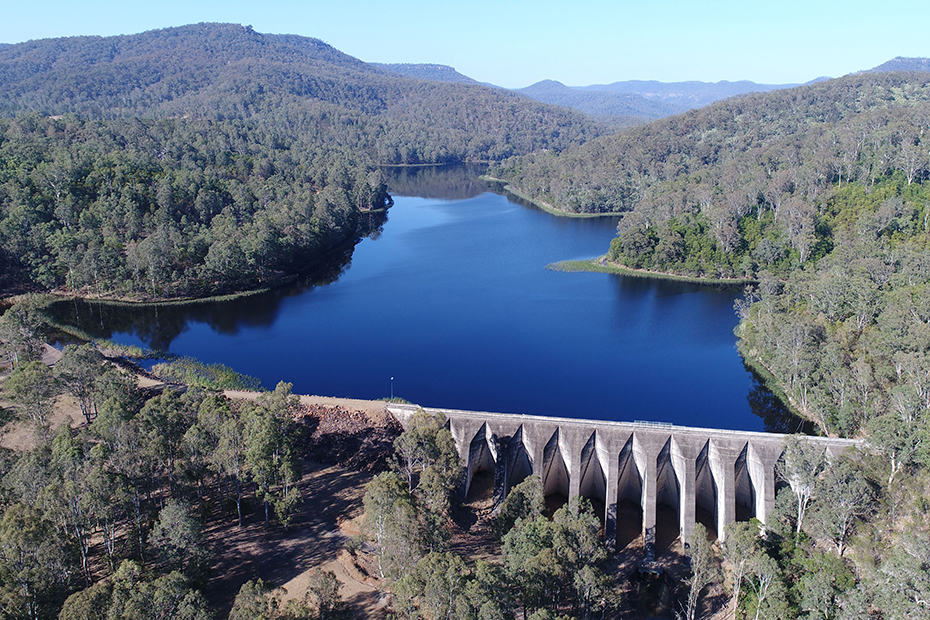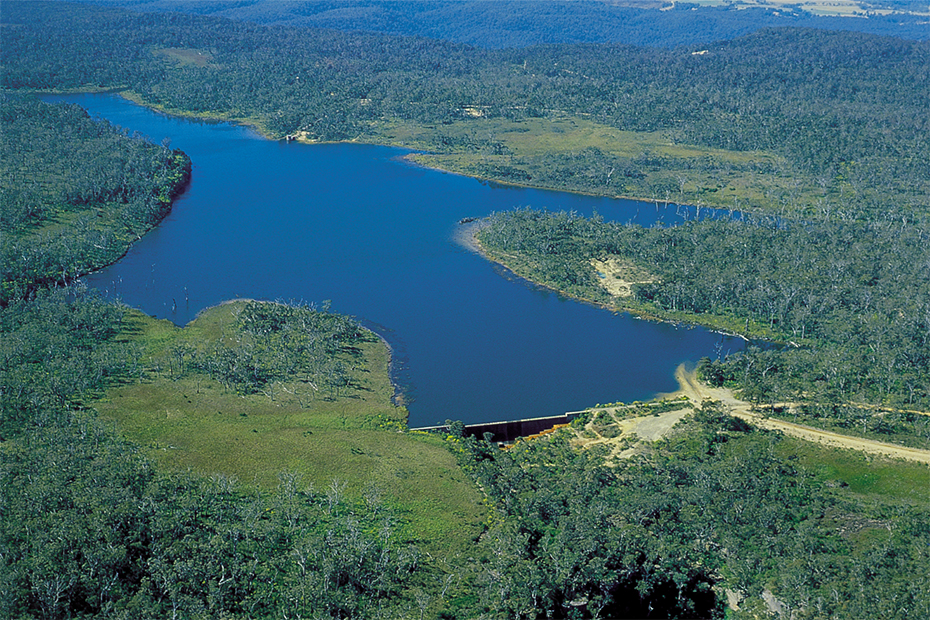There are three main storage dams in the Shoalhaven.
Bamarang Dam
Bamarang Dam is our main water supply in the Shoalhaven, and at full capacity holds up to 3,800 ML. It is an off-creek storage dam that is topped up by pumping water from the Shoalhaven River further upstream at Burrier pumping station.
The water from the dam is treated at the Bamarang water treatment facility which has the capacity to process up to 75 ML (million litres) of water every day for the community.

Image of Bamarang Dam
Danjera Dam
Danjera Dam is the largest dam in the Shoalhaven and at full capacity holds around 7,660 ML. It is located in a remote catchment west of Nowra and is used as a backup water supply. Water from this dam is only released because of water restrictions.
When we release water from here, it takes up to three (3) days to make its way down the Shoalhaven River to our pumping facility at Burrier. Once the water flow has peaked, we can then pump water to Bamarang Dam to top up our supplies.

Image of Danjera Dam
Porters Creek Dam
Porters Creek Dam has a capacity of 1,900 ML and is in a catchment inland of Lake Conjola. Depending on water levels, this dam supplies water to the southern end of the Shoalhaven. The water from this dam is treated at the Milton water treatment facility.

Image of Porters Creek Dam
Annual safety reports
The below reports demonstrate our compliance with dam safety standards as set out in the Dams Safety Regulation 2019.